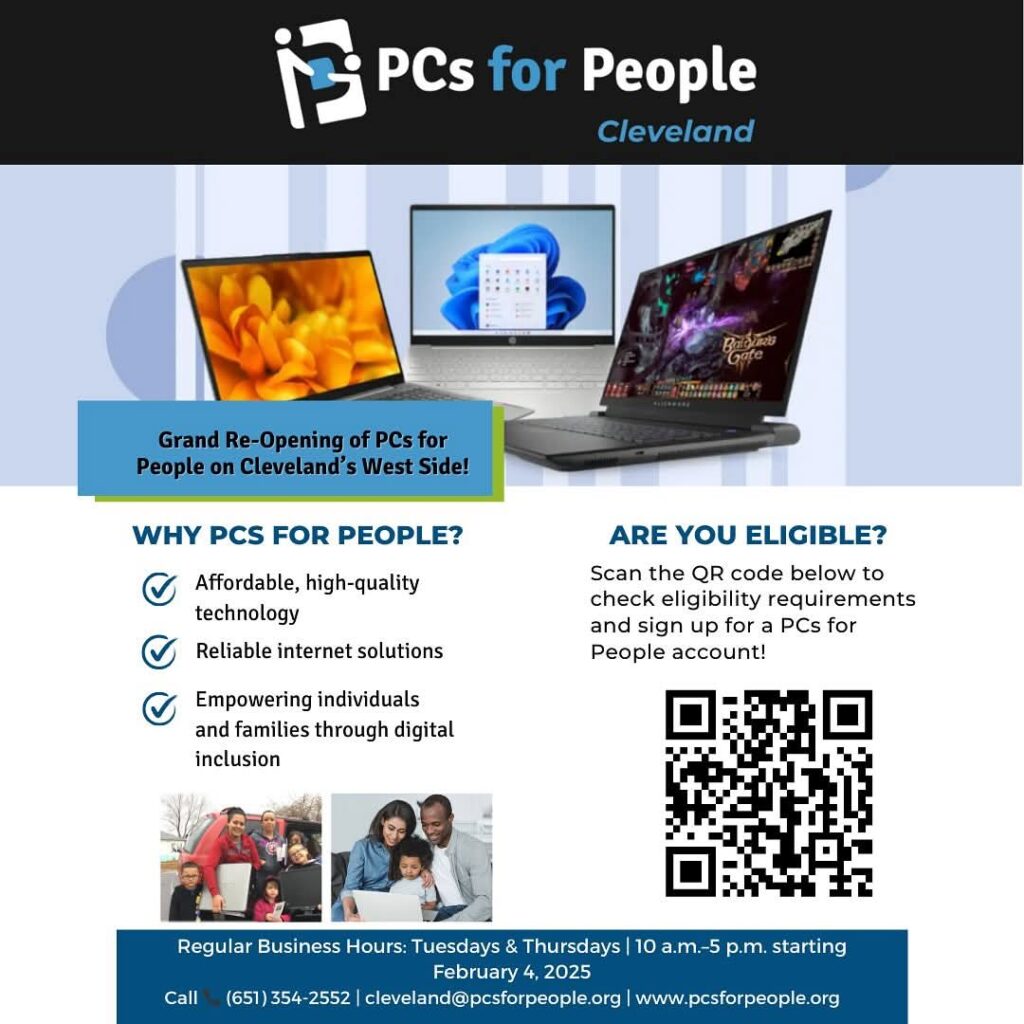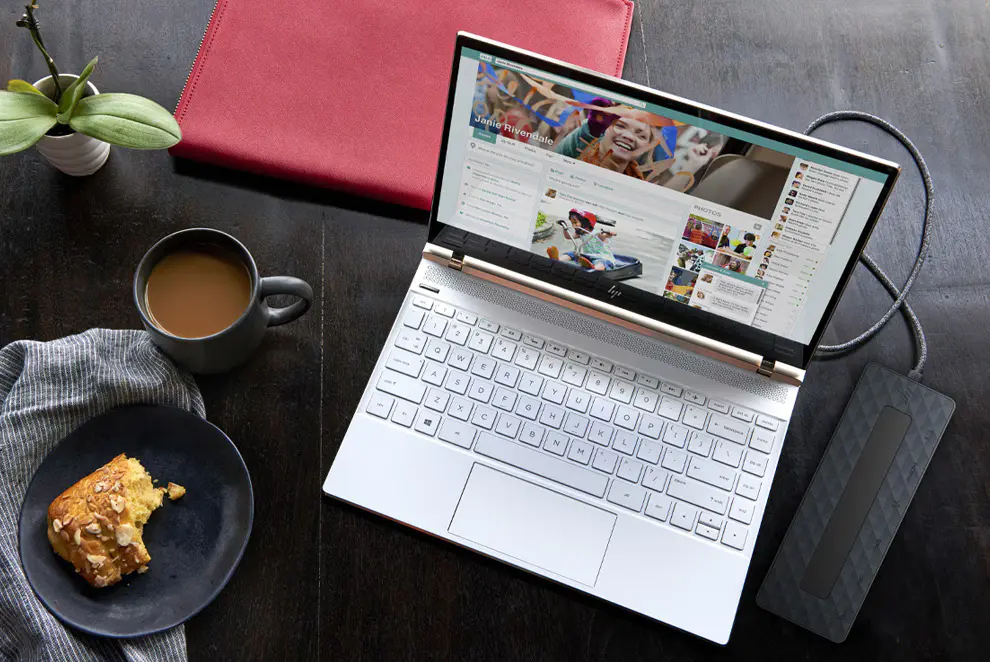Table of Contents
You’re ready to apply for a job, but there’s no computer in sight. Or maybe you need to join a telehealth visit, but you don’t have internet access.
Sound tough? For many folks on Medicaid, this is real life.
Technology isn’t just nice to have—it’s a game-changer for education, jobs, health, and staying connected with loved ones.
But don’t worry, there’s good news!
There are programs out there giving away free or super cheap laptops to help people like you.
In this guide, we’re going to make it super easy for you.
We’ll walk you through how to snag a free laptop if you’re on Medicaid and point you to the best programs that can hook you up.
Medicaid helps millions of people by covering healthcare costs. But it doesn’t stop there. If you have Medicaid, you may also qualify for a free laptop through special programs.
How does it work? The Lifeline program, supported by the government, gives Medicaid users the chance to stay connected by offering free or discounted devices. With a laptop, you can study online, apply for jobs, or even attend virtual doctor visits.
If you’re on Medicaid, you may qualify for programs that give out free or heavily discounted laptops — check approved providers to apply.
Let’s get you the tech you need to thrive—stick with us, it’s going to be worth it!
Why You Need a Laptop (and Why It’s a Big Deal)
A laptop can be very useful for people on Medicaid. It can help with many important things in their lives.
Now we will discuss some of the ways a laptop can help.
Let’s break it down:
- Education: Online classes, homework, or even just Googling something new.
- Jobs: Applying online, doing interviews, or working from home.
- Health: Booking doctor visits or chatting with your doc over video.
- Friends & Family: Video calls, texts, or keeping up with everyone’s news.
Without a laptop, these things get tricky fast.
That’s where free laptop programs come in—they’re here to level the playing field and give you a shot at all this good stuff.
How Medicaid Can Help You Get a Free Laptop
Medicaid pays for many health needs. It helps people with low income get doctor visits, hospital care, and medicines.
Having Medicaid can also make it easier to get a free or very cheap laptop. Many help programs look at Medicaid as proof you qualify for communication discounts and device offers.
Lifeline is a federal program that lowers phone or internet costs for people who meet income or benefit rules. Lifeline itself gives a monthly discount on service, and some approved providers include free or deeply discounted devices as part of their plans.
If you have Medicaid, check Lifeline rules in your state. Rules and offers can change, and device availability depends on the provider and location. Gather your Medicaid card or benefits letter before you apply.
How to start: find Lifeline providers in your ZIP code, pick a plan that lists a device, and upload your proof. After verification, the provider will tell you if you qualify and ship the laptop.
Keep copies of what you submit. Use only official provider sites and avoid any offer that asks for large upfront payments for a “free” device.
Eligibility for Free Laptops with Medicaid
Many people wonder if they can get a free laptop through Medicaid. There are some rules you have to meet to get a free laptop.
Here are the general rules for programs that give free or discounted laptops to people on Medicaid.
-
Medicaid Enrollment
You must be signed up for Medicaid. Medicaid is a program run by the government. It helps people with low incomes get health care.
If you already get Medicaid, you might be able to get a free laptop.
This is because many programs use Medicaid as a way to decide who gets help.
Claim Your Free iPad with Medicaid
-
Income Requirements
Many free laptop programs are for people who do not make much money.
Usually, people who apply must have a household income that is at or below 200% of the federal poverty level.
If you can get Medicaid, it is likely you meet this income rule. This is because Medicaid also has income limits.
-
Proof of Medicaid Enrollment
When you apply for a free laptop, you will need to show that you are on Medicaid.
You can show a Medicaid card.
You can also show a letter from your Medicaid provider.
This paper shows that you are allowed to get Medicaid.
Additional Programs and Benefits
Some laptop programs want you to be part of other help programs.
These programs include SNAP (food stamps), SSI (help for people with disabilities), or housing help.
If you are part of these programs, you might get more help when you apply for a free laptop.
This is because these programs also help people with low incomes.
Best Programs Offering Free Laptops for Medicaid Recipients
There are several programs in the United States that give free or cheap laptops to people on Medicaid.
Here are some of the best choices.
The Affordable Connectivity Program (ACP)
The Affordable Connectivity Program (ACP) is a government program.
It gives discounts on internet and devices to people with low incomes.
People on Medicaid can use this program.
It gives free or very cheap laptops, tablets, and internet.
This program can help you get both a device and internet access.
Free Government Internet Service – Affordable Connectivity Program (ACP)
- Eligibility: Must be on Medicaid or meet low-income rules. Household income must be at or below 200% of the federal poverty level.
- How to Apply: Apply online through the official website or an internet provider. You need proof of Medicaid, household income, and possibly your residence in a covered area.
- Benefits: One-time discount for a laptop or tablet. Also provides discounts on internet service, making it a great option for both a device and internet access.
PCs for People
PCs for People is a group that does not make a profit.
They give free or cheap used laptops and desktop computers to people with low incomes.
Their goal is to help more people get technology.
They want to help close the gap between those who have computers and those who do not.

- Eligibility: To get a free or cheap laptop from PCs for People, you must meet these rules:
- You must get Medicaid or be in another government help program like SNAP or SSI. You must have a household income at or below 200% of the federal poverty level.

- How to Apply: To apply, go to the PCs for People website and fill out the online form.
- You will need to show proof of income and Medicaid. You will also need to show who you are and where you live.
- Benefits: PCs for People gives used laptops that work well.
- They are good for students, people looking for jobs, and people who need a computer for basic tasks.
- The computers already have the needed programs on them. The application is easy to do.
EveryoneOn
EveryoneOn is a national group that does not make a profit. They help people with low incomes get affordable internet and computers. Their programs help close the gap between those who have technology and those who do not. They want to give people the tools they need to do well in today’s world.
- Eligibility: People on Medicaid can get computers through EveryoneOn.
They must meet the program’s income rules.
The rules might be different in each state.
But usually, people must have an income at or below 200% of the federal poverty level.
- How to Apply: You can apply for a free or cheap laptop on the EveryoneOn website. You put in your ZIP code.
Then, you will see local programs and help in your area.
You should be ready to show papers like proof of Medicaid and income.
- Benefits: Through EveryoneOn, you can get cheap internet plans and low-cost computers.
Sometimes, they come together as a deal.
This program helps you get a laptop and also makes sure you can get internet.
The On It Foundation
The On It Foundation is a group that does not make a profit.
They give free laptops to students in grades K-12 from families with low incomes.
The group wants all students to have the technology they need to do well in school.
This is a good resource for families with school-aged children.
-
Eligibility: To receive a free computer from The On It Foundation, applicants must:
- Be a student in grades K-12.
- Attend a public school in the United States.
- Participate in the free or reduced school lunch program.
-
How to Apply: Parents or guardians should:
-
Write a letter requesting a free computer, including:
- Student’s name, age, grade, school name, address, and phone number.
- Parent/guardian’s name, address, and phone number.
-
Obtain a statement from the school, on official letterhead, confirming the student’s participation in the free or reduced lunch program.
-
Mail both documents to:
The On It Foundation
Attn: Free Computer Application
18520 NW 67th Avenue, Suite 186
Miami, FL 33015Alternatively, documents can be emailed to Info@TheOnItFoundation.org, ensuring the letter includes an original signature and the school statement is on official letterhead.
-
-
Benefits: The On It Foundation provides:
- Free computers to eligible students, ensuring they have the necessary tools for schoolwork and online learning.
- Access to technology for students who may not have a computer at home, bridging the digital divide and supporting educational success.
Key Information You Need to Know
If you are thinking about applying for a free laptop, there are some important details to know.
Here is some information about these programs.
-
Costs Associated with Free Laptops
Most free laptop programs give laptops at little to no cost.
Some programs might ask for a small fee for sending the laptop or processing the application.
But this fee is usually much less than buying a new laptop.
This makes it more affordable for you.
-
New vs. Refurbished Laptops
Many free laptops from these programs are used.
This means they have been checked, fixed, and tested to make sure they work.
They are not brand new, but they work well for most things and are a good way to save money.
These laptops are still reliable for general use.
-
Using Free Laptops for School and Work
Free laptops are usually good for online school, working from home, applying for jobs, and basic internet use.
It is important to check the program details to make sure the laptop can do what you need it to do.
The laptops can be different from program to program.
-
Accessing Both a Laptop and Internet
Some programs, like the Affordable Connectivity Program, give free laptops and also cheap or free internet.
If you need both a laptop and internet, make sure the program you apply for gives both.
This can save you money on both devices and internet service.
Eligibility for Medicaid Recipients
To get a free laptop from these programs, you usually need to be on Medicaid and meet certain income rules.
The income rules are usually that you must have an income at or below 200% of the federal poverty level.
Each program has its own rules, so you should check the program’s website before you apply.
Programs for Students on Medicaid
Some programs, like The On It Foundation, give free laptops to students, especially those in grades K-12.
If you have children in school and are on Medicaid, you might be able to get a free laptop from these programs.
This is a great resource for families with school-aged children.
Rural Area Availability
Most free laptop programs are available all over the country, even in rural areas.
But how many laptops are available might be different depending on where you live.
It is important to check if the program helps people in your area.
Applying to Multiple Programs
You can apply to more than one program.
But you can usually only get one free laptop from each program.
If you can get help from more than one program,
it is a good idea to apply for programs that also give other things, like cheap internet.
What to Do if Your Application is Denied
If your application is turned down, check again that you meet all the rules.
You might need to give more papers or apply again when you meet the rules.
You can call the program’s customer service to ask why your application was turned down and how to fix the problem.
How to Apply for a Free Laptop: A Step-by-Step Guide
Getting a free laptop with Medicaid might seem hard, but it is not if you follow the right steps.
Here is a simple guide to help you apply for a free or cheap laptop.
-
Check Your Eligibility: Confirm that you are enrolled in Medicaid and meet the program’s income requirements.
if you’re uncertain about your eligibility, visit the official Medicaid website for detailed information.
-
Gather Necessary Documents: Prepare the following documentation:
- Proof of Medicaid enrollment (such as your Medicaid card or an official letter)
- Proof of income (like recent pay stubs, tax returns, or documentation of other benefits)
- Proof of identity and residence (for example, a driver’s license or a utility bill)
-
Select a Program: Identify the program that best suits your needs.
- For educational purposes, The On It Foundation may be a suitable option.
- If you’re seeking assistance with a laptop and internet access, consider programs like the Affordable Connectivity Program (ACP) or EveryoneOn.
-
Complete the Application: Most programs offer online application forms. Ensure you:
- Accurately fill out all required fields
- Upload the necessary documents
- Follow all provided instructions meticulously to prevent any processing delays
-
Wait for Approval: The review process may take several weeks. During this period, remain patient and promptly provide any additional information if requested.
-
Receive Your Laptop: Upon approval, you’ll receive your laptop either through mail delivery or via a local organization, depending on the specific program’s procedures.
Conclusion
Having a laptop is not just a nice thing to have; it is something you need.
Whether it is for school, looking for a job, health care, or staying in touch with family and friends, a laptop gives you many chances.
If you are on Medicaid and meet the rules, you can use several programs that give free or low-cost laptops to people who need them.
By following the application steps and picking the right program, you can get the technology you need to do well in today’s world.
FAQs:
Yes! Medicaid folks can grab free or cheap laptops from government and nonprofit programs helping low-income families.
What programs offer free laptops?
Check out the Affordable Connectivity Program (ACP), PCs for People, EveryoneOn, and The On It Foundation—prime spots for Medicaid recipients!
How do I apply?
Simple! Verify your Medicaid and income status, pick a program, gather your docs (Medicaid proof, income, ID), and apply online. Done!
What documents do I need?
Three essentials: Medicaid proof (card/letter), income proof (pay stubs/tax returns), and ID (driver’s license). You’re good to go!
Can I get one if I’m not a student?
You bet! Programs like PCs for People and ACP hook up Medicaid users—students or not—with laptops for jobs, healthcare, and more.




